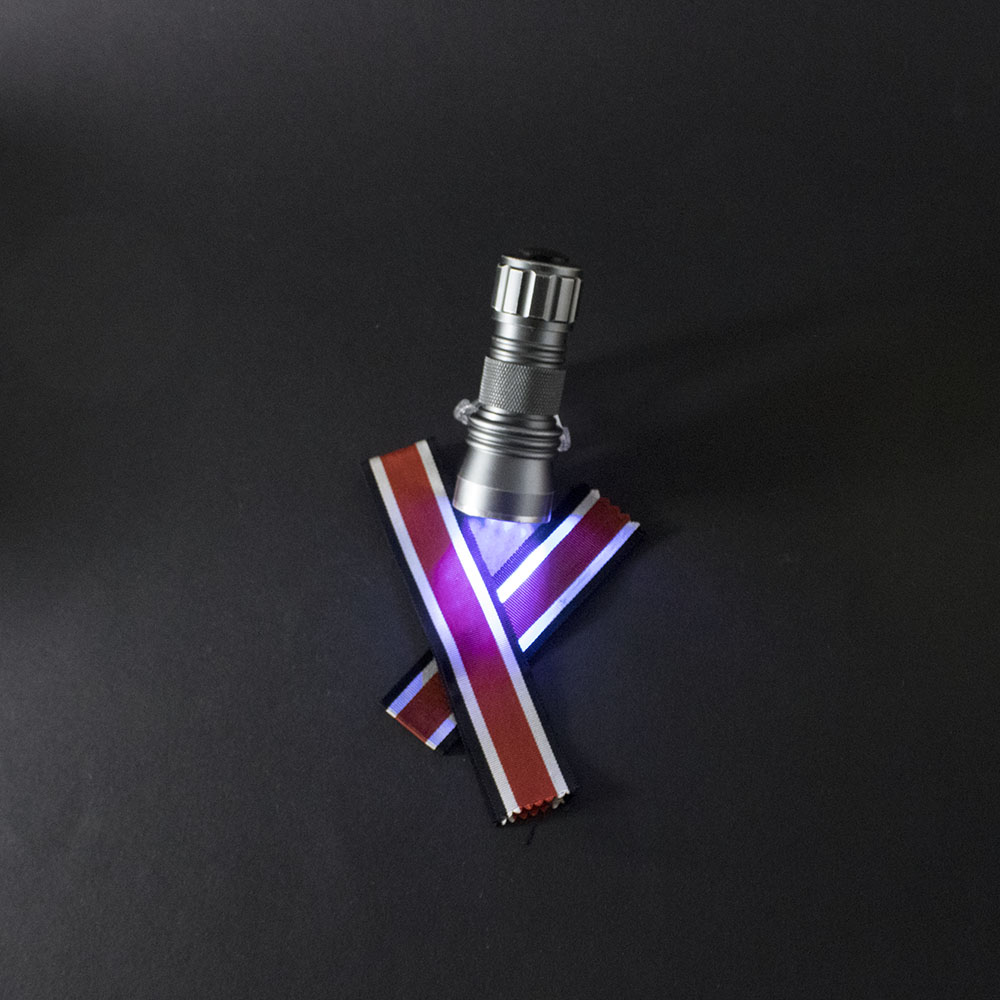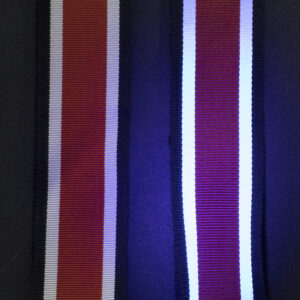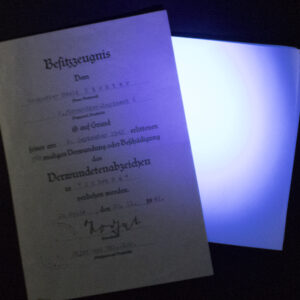Using a Black Light (UV Light) to Verify Third Reich-Era Paper and Textile Items
A useful tool for assessing the authenticity of paper or cloth items from the Third Reich era is the black light test (also known as the UV light test). Generally speaking, original ribbons or documents from this period do not fluoresce under UV light. This is because the chemical bleaches and fluorescent dyes commonly found in modern materials were not widely used at the time.
Paper items produced before 1945 typically do not glow under black light. In contrast, many papers manufactured since the 1950s do fluoresce due to the use of modern chemical additives. The same principle applies to textiles: fabrics containing synthetic fibers or fluorescent dyes will glow under UV light — a strong indication that the item may be a later reproduction, as such materials were rarely used during World War II.
Important Considerations
While the black light test is a valuable tool, it should not be used as the sole method for determining authenticity. Some collectors point out that fluorescent dyes did exist before the war. That’s true, but they were rarely used in military production. In practice, authentic period items almost never fluoresce.
Still, caution is advised:
- An item that glows under UV light is not automatically a reproduction. It may have been washed with modern detergents, which can leave fluorescent residues.
- Conversely, just because an item does not glow doesn’t guarantee it is original.
The black light test is therefore best used as a supporting tool, alongside other methods such as material analysis, stamp verification, and provenance research.
Examples
The images below show 2 EK ribbons and paperwork under UV light. The ribbon on the lift is original and reflect minimal light. The ribbon on the right is a modern reproduction and clearly fluoresces. Also the (wound badge) document on the left is an original and on the right is a modern piece of paper. — a strong indication that these are not from the original period.



